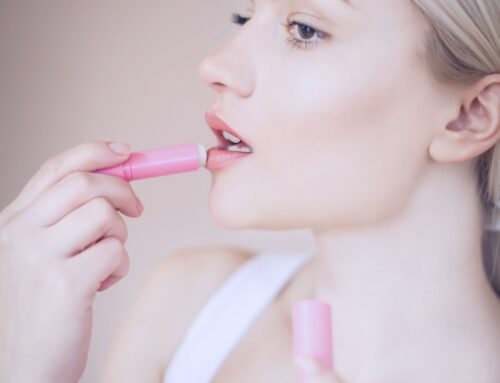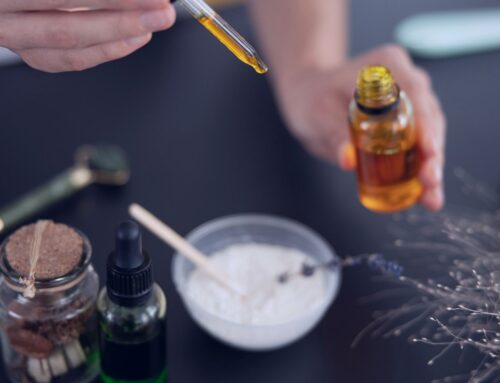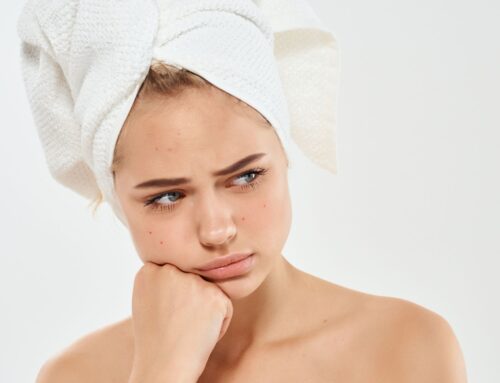The popularity of aesthetic medicine and antiaging care is greater today than ever, which many companies have used to market products with “patented” ingredients that often do not have any scientific evidence. If you have been “wandering” with facial care products, now is the right time to include clinically confirmed active substances whose effectiveness has been proven in scientific studies into your daily routine. It is no less important which products you can combine, and which by no means, which we will write about in detail.
Products for sun protection
The SPF cream is a superstar in the field of face care. There must be a wide spectrum (UVA, UVB) and sufficient concentration, i.e. SPF30 or higher. There are products on the market with chemical and physical protective factors.
The physical protective factor (titanium dioxide and zinc oxide) represents the gold standard in sun protection. They remain on the surface of the skin, they are not resorbed, that is, they do not have any systemic effects, therefore no unwanted effects. The main disadvantage of physical protective factors is the whitish mark they leave, which was partially solved by shredding to nanoparticles and adding pigments to the cream itself, which hide the whitish mark.
In the world of chemical protective factors there are significant controversies and doubts, which we will write about in one of the following blogs. What is indisputable is that chemical factors provide excellent protection, but only if you use antioxidants along with chemical factors, such as e.g. vitamin C.
If used correctly, throughout the year, whether it’s a cloudy or sunny day, the protective factors represent the most effective prevention of premature aging of the skin, the appearance of pigmentation and other damage caused by the sun. It is important to note that just one minute of exposure to strong sunlight is enough to cause damage to the skin!

Antioxidants
Antioxidants protect the skin from free radicals that we are constantly exposed to due to pollution, lifestyle and other factors. Hundreds of different antioxidants are used in cosmetic products, but the most effective are vitamin C, vitamin E, ferulic acid , resveratrol , alpha lipoic acid , green tea extract. Although they are effective on their own, it is best to use a serum with their combination.
As vitamin C is among the most effective antioxidants, and at the same time the most present in cosmetics in our country, we will explain in detail what it is important to pay attention to.
VITAMIN C
The most effective form of vitamin C is L-ascorbic acid . Vitamin C stimulates collagen synthesis, neutralizes free radicals, evens the complexion, reduces pigmentation, and gives the skin radiance.
With aging, the concentration of vitamin C in the skin decreases, thus the defense power of the skin against various pollutants from the environment, so it is very important to replenish it. Although it is a common misconception that it should not be used during the summer, vitamin C actually enhances the effect of protective factors, neutralizing free radicals released by solar radiation.
serum with vitamin C
For maximum utilization, it is recommended to use a serum with vitamin C instead of a cream. A serum with a concentration of 10-15% pure vitamin C (L-ascorbic acid) is recommended, and the optimal pH of the serum is 3.5. At this pH value, maximum penetration of vitamin C into the skin is achieved.
The main problem with L-ascorbic acid is its extreme instability in air, light and heat. That is why it is necessary for the serum to be in packaging that protects it from exposure to air and light ( airless pump and opaque packaging). We all love pipette bottles because they are easy to use, and applying the serum with a pipette is a real pleasure. However, due to exposure to air, pipette serums must be used quickly, preferably within two months of opening. The addition of ferulic acid and vitamin E to serums with vitamin C increases the stability of vitamin C and resistance to oxidation, thus the length of application, and there are additional beneficial, antiaging effects of these substances.
Pay attention! Vitamin C darkens through oxidation, that is, it first becomes dark yellow and finally brown. Although many manufacturers state that the serum does not lose its effectiveness by darkening, this is actually not true. If the serum has become brownish, it is time to throw it away, because not only has it lost its effect, but it can also have harmful effects on the skin.
Watch the video below to see how to make your own vitamin C at home.
Retinol
If we had to choose only one antiaging substance, the answer would most certainly be retinol. No other antiaging substance has as much documented, scientific evidence as retinol. What’s the magic?
Retinol accelerates the cycle of skin cell division, which means that there is a faster exfoliation (removal) of old, damaged cells and the creation of new and healthy skin cells.
Retinol has been proven to increase the synthesis of collagen and elastin, reduce wrinkles, enlarged pores and improve skin texture, pigmentation and even out complexion.
The negative sides of retinol are irritation and dryness of the skin that may occur at the beginning of use and that pass over time. In order to avoid them at the beginning of use, we recommend a cream with a small percentage of retinol (0.1%) or using a regular concentration of retinol (0.3-0.5%) 2 or 3 times a week in the first month or two. After your skin gets used to it, retinol should become part of your daily evening routine. Also, the use of products for protective factors is necessary, in order to protect new, young cells and prevent pigmentation.
Do not forget that visible effects require at least 6 months of regular use, and the best thing is that the results get better and better over time. Also, various forms of retinol such as retinol palmitate often have significantly less effects, so always make sure that your cream has pure retinol (in the list of ingredients it will say retinol without prefixes and suffixes) or retinoic acid (tretinoin).
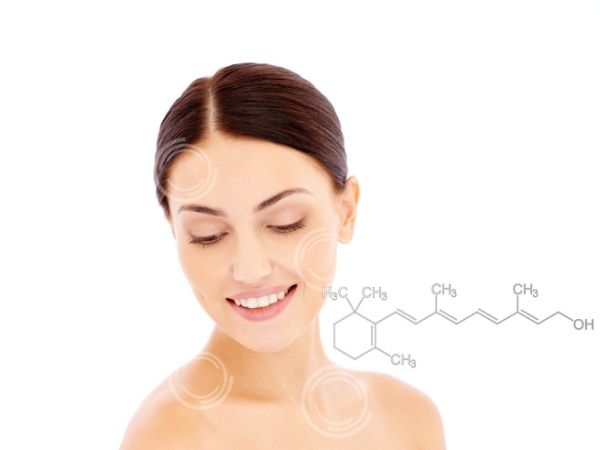
Niacinamide
Niacinamide (vitamin B3) has become an important part of the antiaging routine in recent years thanks to its many beneficial properties. Among them is niacinamide’s ability to reduce pores and red marks after acne, making it a must for oily and combination skin care. However, niacinamide’s ability to soothe and restore the skin, reduce wrinkles, puffiness and even out the complexion make it indispensable in the care of all skin types. An adequate concentration of niacinamide is 5-10%.
A common misconception about niacinamide is that it should not be used in combination with vitamin C. The confusion arose because of research from the 1960s. years in which unstable forms of the mentioned substances were used. If you have been thinking about a product containing vitamin C and niacinamide in the same product or a combination of these two products, you can start immediately. Not only do the mentioned substances not reduce the effect if they are used at the same time, but on the contrary, the beneficial effects will be even greater.
Fruit acids
Glycolic and lactic acid (AHA)
These acids act on the surface layers of the skin and evenly break the bonds between damaged and dead skin cells, causing them to be removed by invisible peeling. Thanks to this, skin cell renewal is accelerated, so damaged cells are replaced by young and healthy cells. The beneficial effects do not end here, because glycolic and lactic acid hydrate the skin, reduce the visibility of pores and fine lines, even out the complexion and reduce pigmentation.
Salicylic Acid (BHA)
Salicylic acid is fat-soluble, which is why it not only acts on the surface layers of the skin, but also deeply cleans the pores. It is ideal for the care of oily and blackhead-prone skin, because it deeply cleans the pores, prevents the formation of new blackheads and alleviates existing ones. It is also successfully used to remove milia. However, it is important to note that salicylic acid in an adequate percentage can help hydrate and soothe dry skin.
Whether it is a product with AHA or BHA, the pH value of the product for maximum effect should be 3-4. The mentioned acids are the easiest to introduce into the antiaging routine as ingredients of a washing gel or tonic. Advanced users who take care of their skin for a long time and know their skin can also use serums with a higher concentration once a week, preferably in the evening.
A frequent question is whether it is permissible to use products with AHA and BHA with retinol at the same time. If your skin has adapted to retinol, which means that there are no visible signs of irritation – redness, flaking and dryness, it is time to introduce chemical exfoliators into your routine. Dry and sensitive skin often does not tolerate the simultaneous use of chemical exfoliators and retinol, so in order to take advantage of the benefits of both ingredients, you can use them alternately, i.e. every other night.
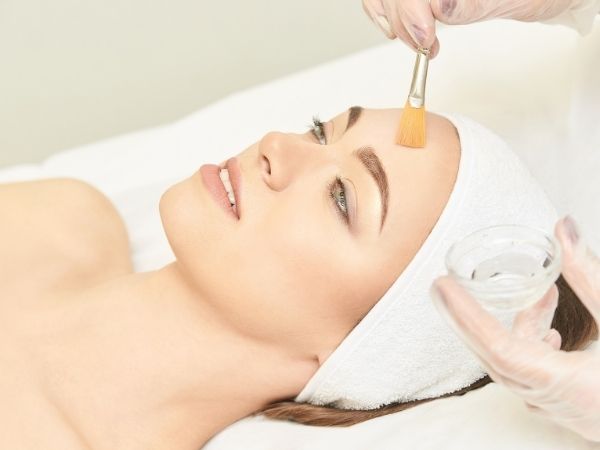
Hyaluronic acid
We all know that hyaluronic acid is good for our skin. Short-chain hyaluronic acid penetrates the skin, hydrates it and reduces the visibility of fine lines. High molecular weight hyaluronic acid does not penetrate the skin due to its molecular size. It remains on the surface of the skin, creating an invisible film that prevents the evaporation of water from the skin, and promotes the entry of other useful substances from the product into the skin.
ceramides and phospholipids
The beneficial effects of ceramides and phospholipids have been known for years. However, as the production is expensive and the sensitivity to air is high, we rarely see these substances in antiaging creams. The lipid envelopes of our cells are made of ceramides, phospholipids and cholesterol. They work best when they are present together in the product, and the beneficial effects are reflected in exceptional hydration of the skin, ability to soothe and restore the skin. The use of these products quickly restores shine and beauty to dry, sensitive and damaged skin. The degree of hydration of the mentioned substances is higher compared to regular cream ingredients (glycerin, hyaluronic acid), which of course does not mean that you should not use them together. Ceramides, phospholipids and cholesterol are fantastic additions to retinol and chemical exfoliators as they remove signs of irritation. Additional benefits of ceramides and phospholipids are their non-comedogenic properties, so they can be safely used on all skin types, including oily and problem skin.
Peptides
Peptides are fragments of proteins, the key building blocks of our skin. Their loss leads to a decrease in tone, appearance of wrinkles and deterioration of texture. The benefits of different peptides are huge, but in recent years there has been a lot of hype around them with claims that they are replacing corrective treatments like Botox or hyaluronic fillers. Unfortunately, those claims are not true, but what is certain is that peptides help skin renewal, reduce fine lines, hydrate and soothe the skin.
Now we come to the most important question, which peptide is best for the skin? Manufacturers often highlight certain peptides as the most effective, which can often be confusing. However, if you really want to get the maximum effect, always choose a product with a combination of several peptides. It is also important to note that peptides alone are not enough, they require the help of friends-antioxidants, retinol and other antiaging ingredients mentioned above.
Copper peptides – the magic ingredient or just another trend?
The anti aging beneficial effects of copper peptides have been proven in science, however they are at best the same if not less beneficial than other peptides –Palmitoyl Tripeptide-1, Palmitoyl Tetrapeptide-7, Palmitoyl Hexapeptide-12 (skin restoring), Myristoyl Hexapeptide-16, Hexanoyl Dipeptide-3. That is why we emphasize once again the importance of the combination of different peptides and their supplementation with retinol, antioxidants and other important anti-aging substances. The main problem of copper peptides is the inability to combine with many useful substances.
Although most other peptides can be combined with vitamin C and retinoic acid in the same routine, copper peptides should not be combined with vitamin C, retinoic acid and other strong antioxidants and direct acids. The reason is that these substances break the bonds between the peptide and the copper. Copper in its pure form has the opposite, toxic effects on the skin instead of beneficial effects, so if you use copper peptides in your routine, separate them from the above-mentioned substances, i.e. use them in the morning routine, and retinol and antioxidants in the evening routine.

